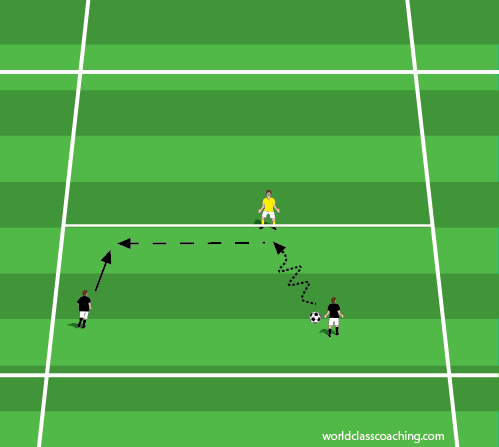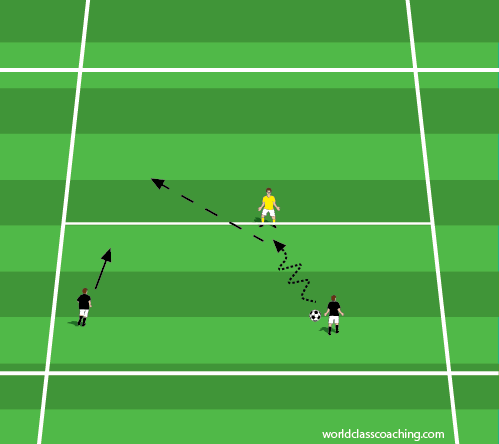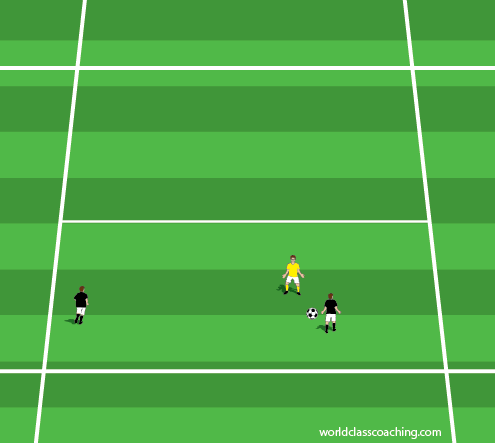Coaches like to talk about combination play but one thing to remember is the players MUST understand the purpose of combination play which is to beat the defenders. While there might be a few occasions when the primary purpose of combinations is simply to maintain possession (an example might be at the end of the game when a team is up a goal and is trying to hold the ball in order to kill time) the primary objective of combination play is to beat a defender or defenders in order to get to goal.
Below are a couple of simple activities to work on basic combinations.
Start with a 10 x 10 grid with a middle line. There is an attacking player in each half and a defender on the middle line. One of the attacking players starts with a ball.

The offensive players can move anywhere within their half of the grid and they simply are looking to pass the ball back and forth. The defender is limited to staying on the middle line.

Some key points for the attacking players are for the player on the ball to move toward the defender in order to get them to commit and also to be willing to play a soft pass into space for the receiving player to run onto . When the player receives the pass they look to then return the pass. With this simple warm up, the players get use to working together, moving off the ball and passing to space. Each player should get a turn as the defender as well as the attacking players.
Next both attacking players start in the same half and they work the ball from one half to the other. The player with the ball will attack the defender (who is still restricted to the middle line) and then can play the ball to the other attackers feet (at which point he dribbles across) or into space.


If the defender cheats toward the second attacker the first attacker can dribble across. While some might say simply dribbling over the line without a pass isn’t a combination play I would argue that the second player was used since they acted as a decoy and therefore with two players involved, there was a combination.
When the ball does go across successfully, both attackers would cross over and do the same thing back. Each player would get a chance as a defender.
Next they play the same game but this time the defender is not restricted to the middle line. This makes them much more active and challenges the attackers.

You can alter the dimensions (bigger grid, smaller grid) or do this as a 3 v 2 or 4 v 3. There are many possibilities but these are a good start for working on combination play.
There is an interesting series of combination activities in the DVD Coaching Combination Play. You can see how to start simply and then add in other variations.
Have a great day!
Lawrence


